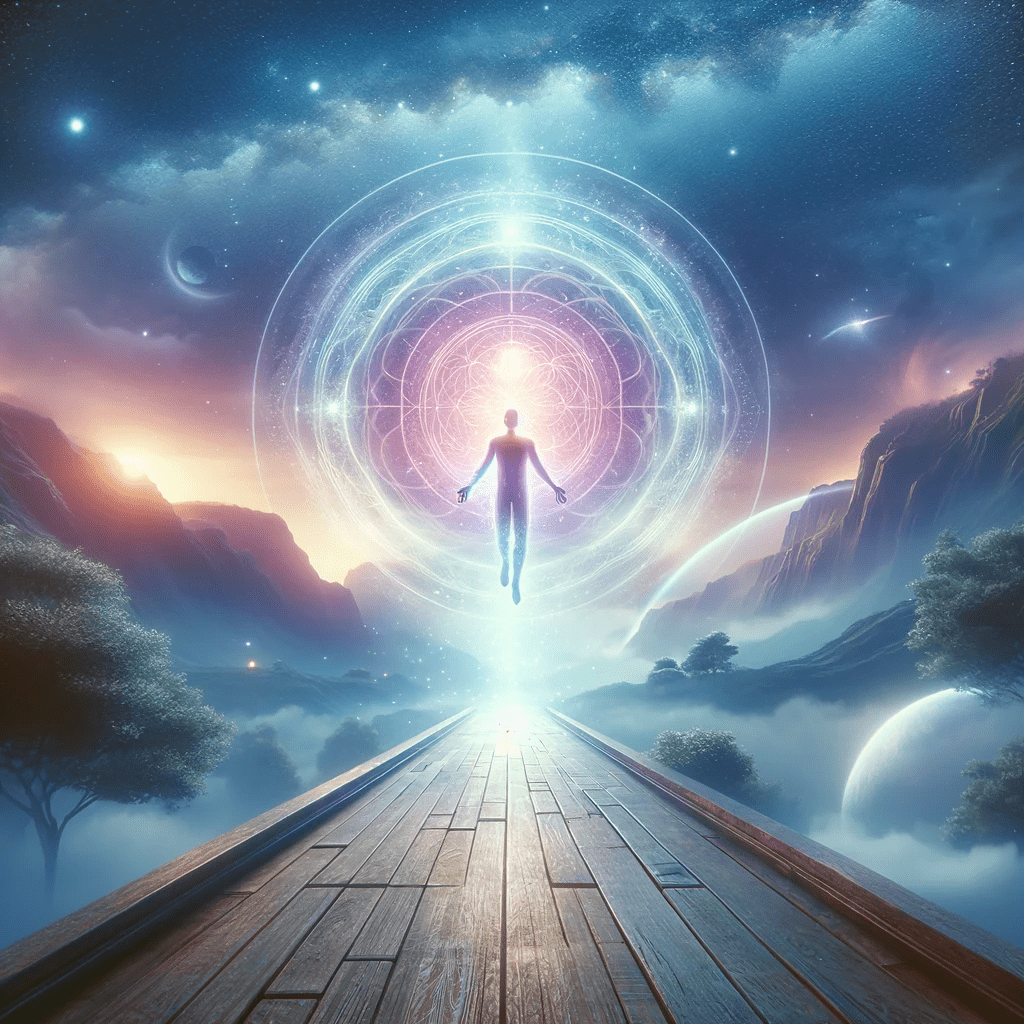Astral Projection

Astral projection is a term used to describe a spiritual experience where an individual claims to have traveled outside their physical body, gaining a unique perspective on the world and the universe. According to proponents, the astral body separates from the physical form, which remains inert during the experience, and travels in an alternative dimension known as the “astral plane.” Astral projection has roots in various religious and spiritual traditions, from Hinduism and Buddhism to Western mysticism and the New Age movement. Practitioners claim that it can occur voluntarily, induced through meditation or rituals, or spontaneously, often during sleep or near-death experiences. They argue that it offers profound insights, promotes spiritual growth, and even allows for interactions with other entities or astral beings.
There was an in-depth assessment of the Gateway Experience, a technique aimed at altering human consciousness. Extensive research and consultations was completed to construct a scientific model for understanding how and why the Gateway Experience works. This involved exploring biomedical models, quantum mechanics, and theoretical physics.
- The initial research looked into biomedical models by Itzhak Bentov to understand the physical aspects of the Gateway process. This helped in understanding how the technique affects human physiology.
- Also examined were related techniques like hypnosis, biofeedback, and transcendental meditation to create a comprehensive comparison and to show how these techniques might serve as entry points to the Gateway Experience.
- Understanding the physics of altered human consciousness requires not just logical thinking but also “right-brain intuitive insight.” This alludes to the complexity and abstract nature of the concepts involved.
- It provides a useful structure for further research, especially for personnel required to undergo Gateway training or work with its materials.
The Analysis and Assessment of Gateway Process document dated June 9, 1983, was produced by the U.S. Army, specifically for the U.S. Army Intelligence and Security Command (INSCOM). This document aims to provide a rigorous scientific assessment of the Gateway Experience, a consciousness-altering technique.
The assessment takes a multidisciplinary approach to understand the Gateway Experience, looking into biomedical models, quantum mechanics, and theoretical physics. The research aimed to build a scientifically valid framework for how and why the Gateway Experience works, focusing especially on the brain hemisphere synchronization techniques employed by Gateway.
Some theories in quantum mechanics—such as “many-worlds interpretation”—could conceivably allow for parallel dimensions, though none specifically support astral projection. Neuroscientific theories often attribute out-of-body experiences to altered states of consciousness, possibly induced by changes in brain chemistry, rather than literal departures from the physical body. In a study by Olaf Blanke and colleagues, published in the journal “Nature” in 2002, it was suggested that the sensation of being out of one’s body could be artificially induced by stimulating the right temporoparietal junction in the brain.
- In the 1970s, Robert Monroe founded The Monroe Institute, which researched consciousness and altered states, including astral projection. The institute used a technique called “Hemi-Sync” to induce different brainwave patterns, potentially facilitating experiences like astral projection. Source: “Journeys Out of the Body” by Robert A. Monroe.
- Studies conducted by Dr. Charles Tart at the University of California in the 1960s attempted to scientifically verify astral projection through controlled experiments, where subjects reported astral traveling to distant locations and described objects or arrangements unknown to them. Source: “Altered States of Consciousness” by Charles Tart.
- A Gallup Poll in 2005 found that around 8% of the American population claimed to have had a near-death experience, some of which included out-of-body experiences that could be likened to astral projection. Source: Gallup Poll, 2005
Dr. Charles Tart, a prominent psychologist and parapsychologist, has been researching altered states of consciousness for decades and believes that experiences like astral projection merit serious scientific investigation. Similarly, Dean Radin, Chief Scientist at the Institute of Noetic Sciences, supports researching phenomena like astral projection and has conducted experiments to test the ability of the human consciousness to affect physical reality.
Books such as “Journeys Out of the Body” by Robert Monroe and “Adventures Beyond the Body” by William Buhlman claim that astral projection is not only real but also teachable and practical. These books offer guides on techniques for leaving the physical body and safely navigating the astral plane.
Astral projections remains a fascinating but controversial subject. While scientific support is limited, proponents argue that it opens up new dimensions of understanding human consciousness and the universe. Nonetheless, the topic continues to captivate the interest of people worldwide, from spiritual seekers to scientific researchers.

